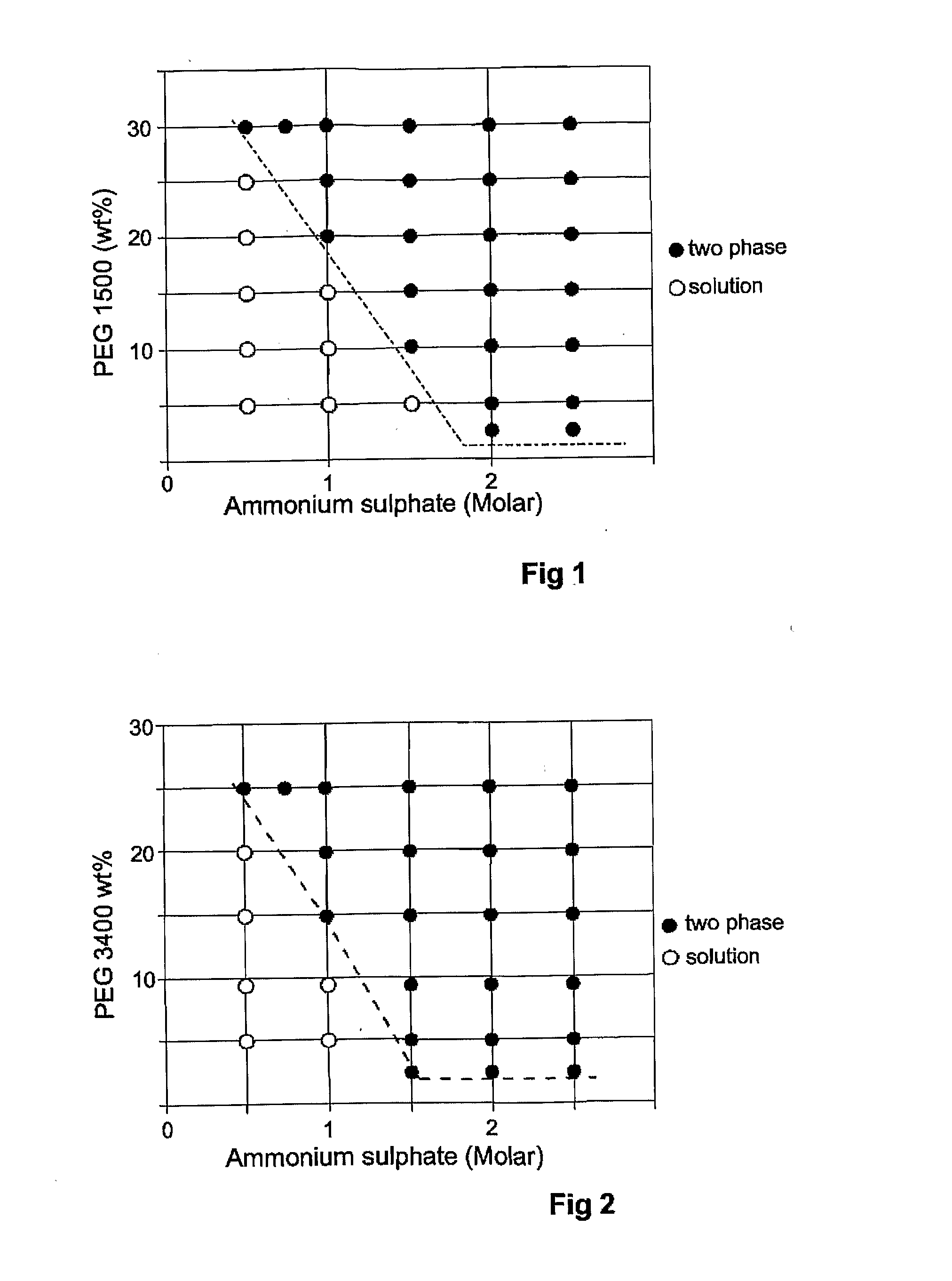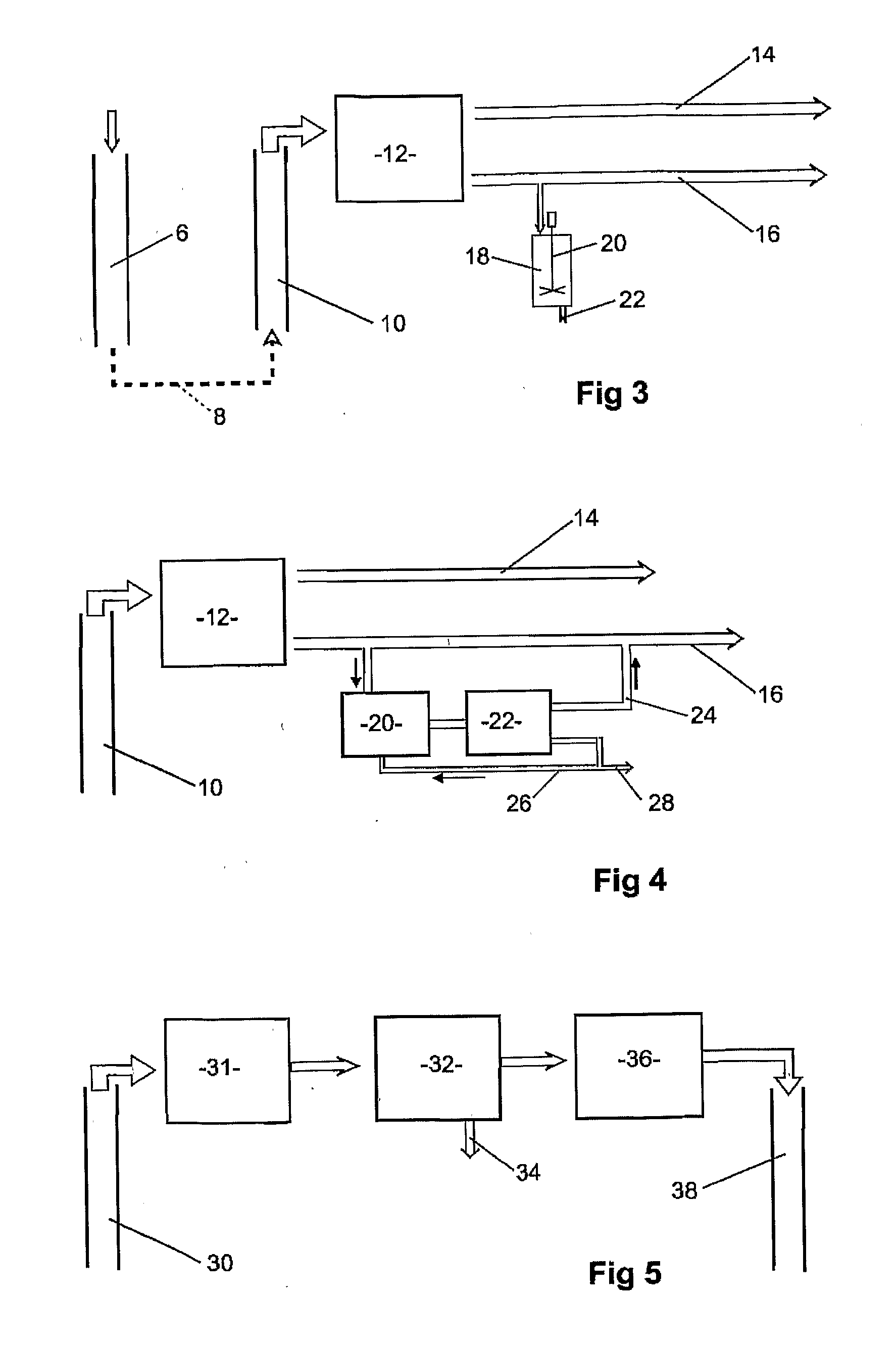Concentration of minor constituent of wellbore fluid
a technology of wellbore fluid and concentration, which is applied in the field of extraction of minor constituents, can solve the problems of large quantity of water likely to be required, delay in obtaining analytical results, and detrimental to cement quality, and achieves the effects of enhancing water viscosity, limiting and reducing the consumption of added polymer
- Summary
- Abstract
- Description
- Claims
- Application Information
AI Technical Summary
Benefits of technology
Problems solved by technology
Method used
Image
Examples
example 1
[0055]This example demonstrates the extraction of lignosulphonate. Chemicals used in this example were ammonium sulfate, lignosulfonic acid sodium salt (average molecular weight=8000), polyethylene glycol containing an average of 1500 oxyethylene units (PEG 1500), polyethylene glycol containing an average of 3400 oxyethylene units (PEG 3400). All of these chemicals were of analytical grade and used as received without further purification. Water was deionised water with a resistivity of 18.2MQ-cm (Millipore Milli-Q Academic ultrapure water system).
[0056]A number of aqueous mixtures were prepared at room temperature by mixing equal quantities of previously prepared solutions of polyethylene glycol and ammonium sulphate. This was done with both PEG 1500 and PEG 3400. In all of the mixtures the PEG solutions contained lignosulphonate at a concentration of 1 mg lignosulphonate per 1 g PEG. Each mixture was vortex mixed for 10 sec, allowed to stand for 10 min and centrifuged at 3000 rpm ...
example 2
[0066]This example demonstrates the extraction of an organic dye which could be used as a tracer. The first dye used was ethyl orange which is 4-(4-Diethylaminophenylazo)benzenesulfonic acid sodium salt. Separation into two phases was accomplished using sodium chloride and sodium neodecanoate, the latter being the sodium salt of highly branched C9 to C11 carboxylic acid available under the trademark VERSATIC acid from Hexion Specialty Chemicals, Inc., Columbus, Ohio. It will be appreciated that this is a salt of an organic acid of sufficient carbon chain length to have surface active properties, although branching of the carbon chain inhibits micelle formation.
[0067]A solution of ethyl orange in water was prepared. Sodium neodecanoate was added to this solution, which remained as a single phase coloured by the dye. Concentrated sodium chloride solution was then added and mixed with the sodium neodecanoate solution. The mixture separated into an upper phase rich in sodium neodecanoat...
PUM
| Property | Measurement | Unit |
|---|---|---|
| depth | aaaaa | aaaaa |
| volume | aaaaa | aaaaa |
| volume | aaaaa | aaaaa |
Abstract
Description
Claims
Application Information
 Login to View More
Login to View More - R&D
- Intellectual Property
- Life Sciences
- Materials
- Tech Scout
- Unparalleled Data Quality
- Higher Quality Content
- 60% Fewer Hallucinations
Browse by: Latest US Patents, China's latest patents, Technical Efficacy Thesaurus, Application Domain, Technology Topic, Popular Technical Reports.
© 2025 PatSnap. All rights reserved.Legal|Privacy policy|Modern Slavery Act Transparency Statement|Sitemap|About US| Contact US: help@patsnap.com



